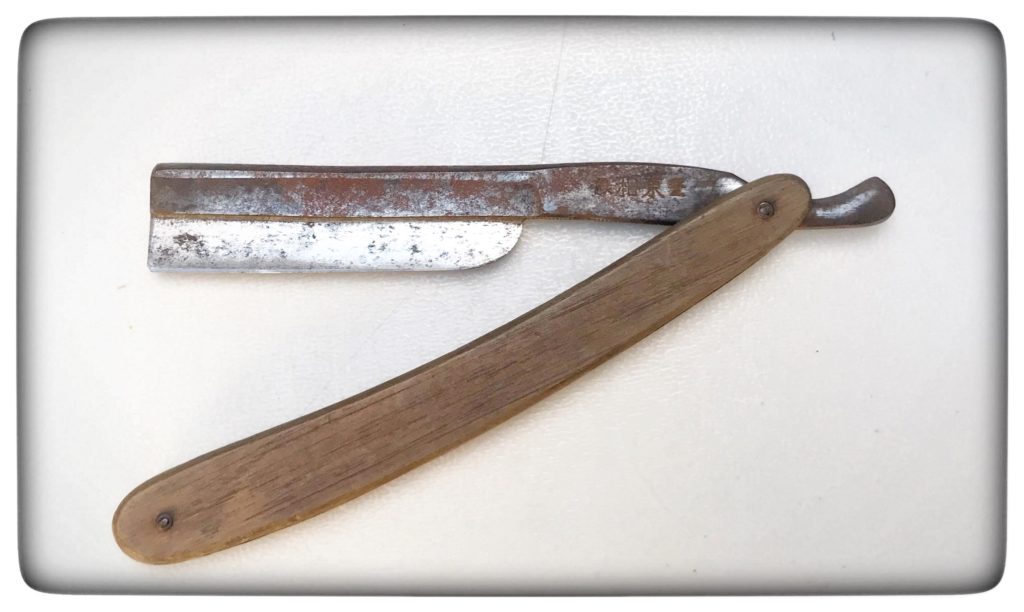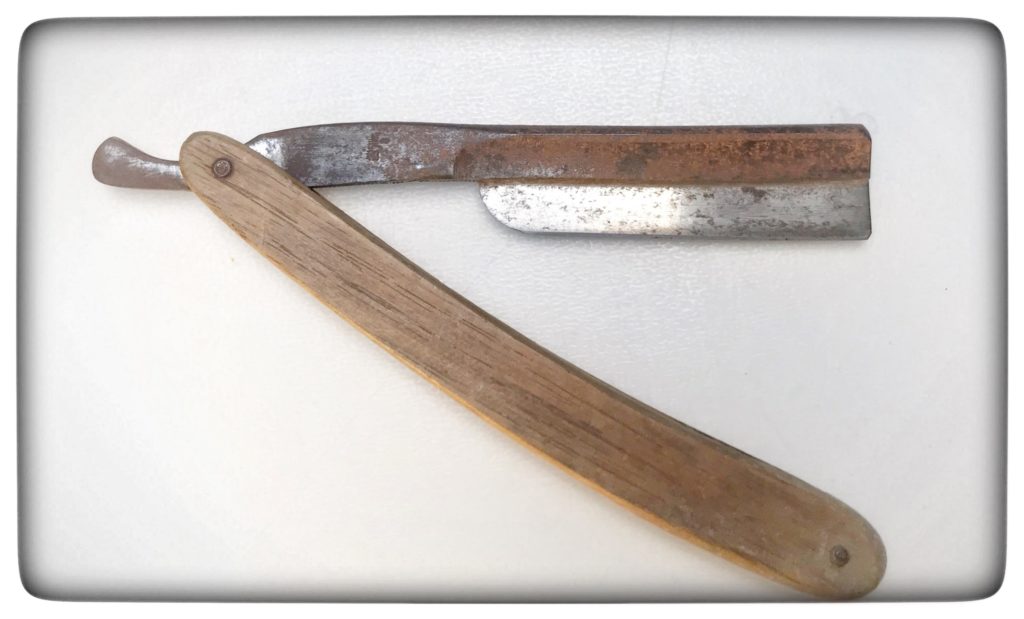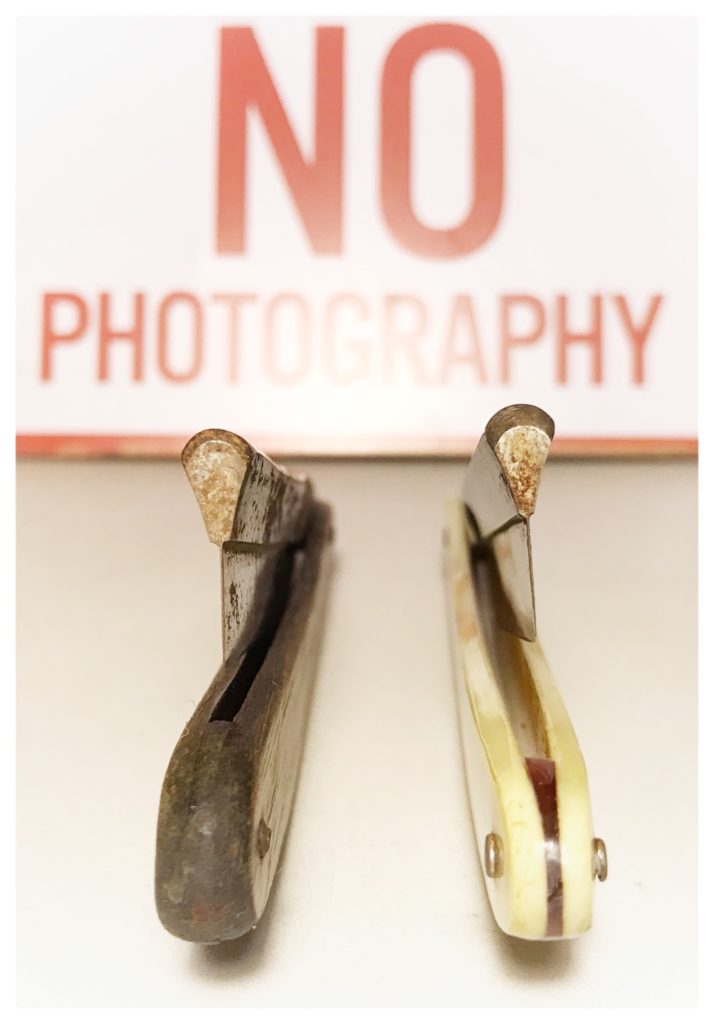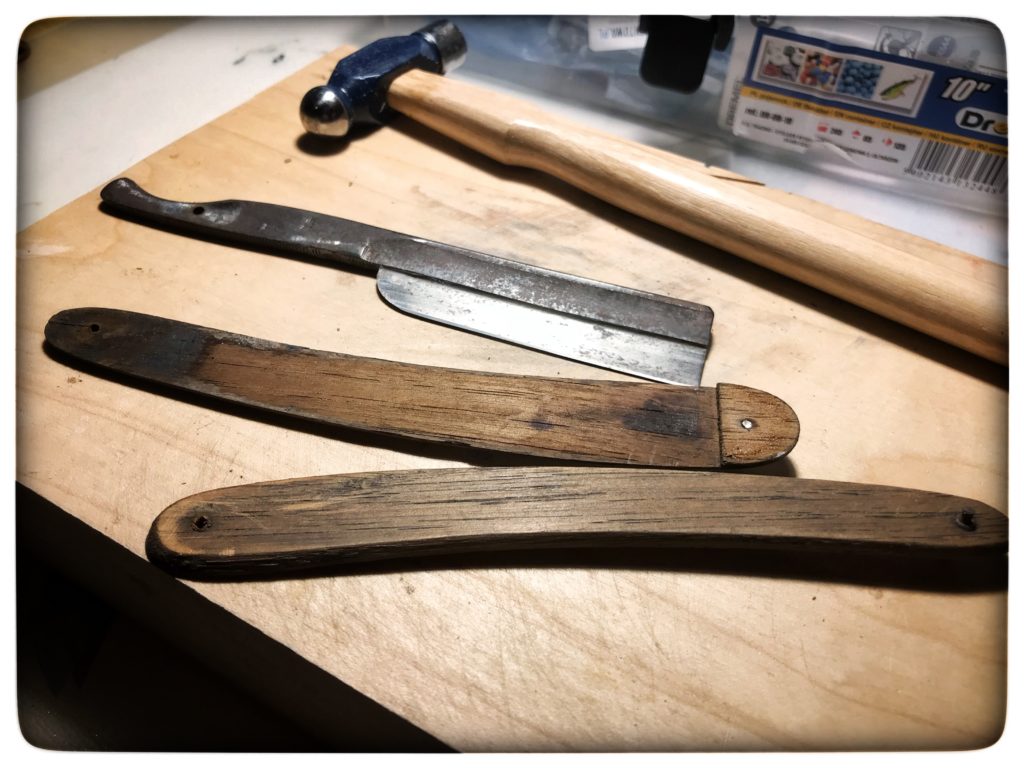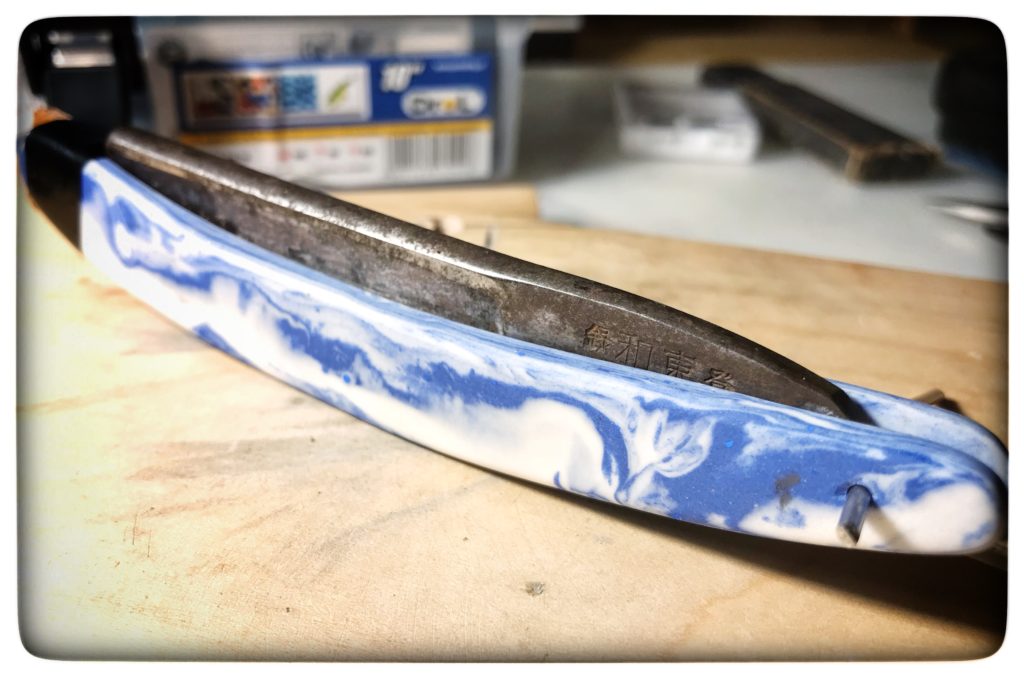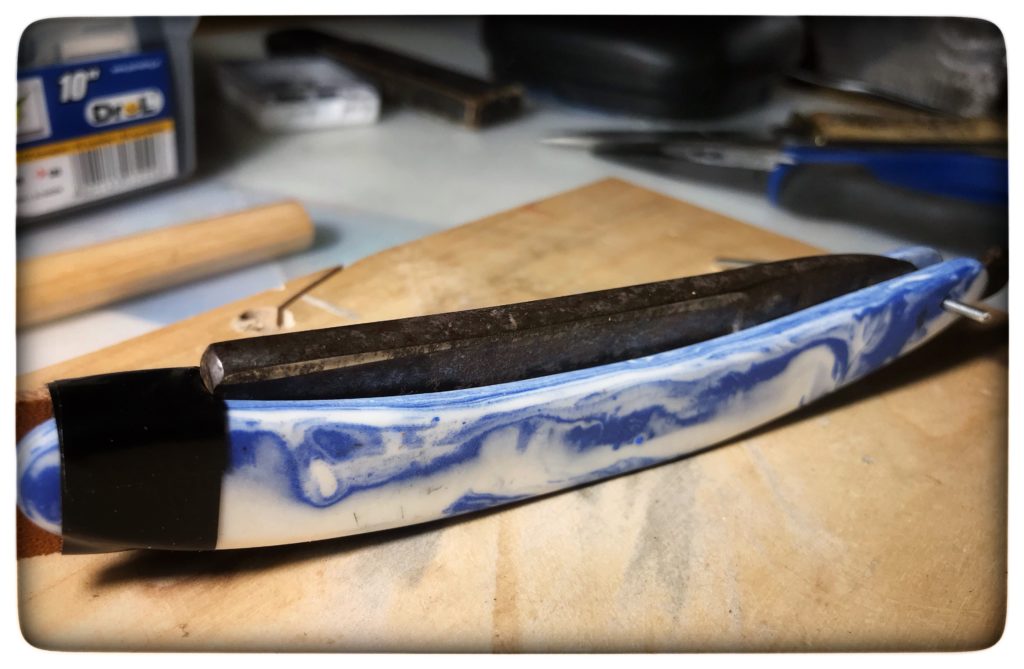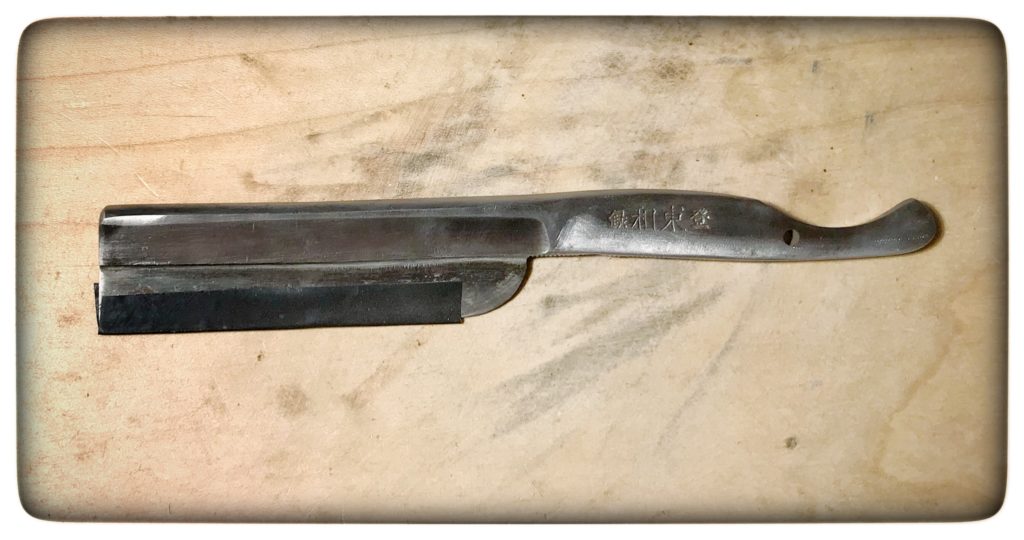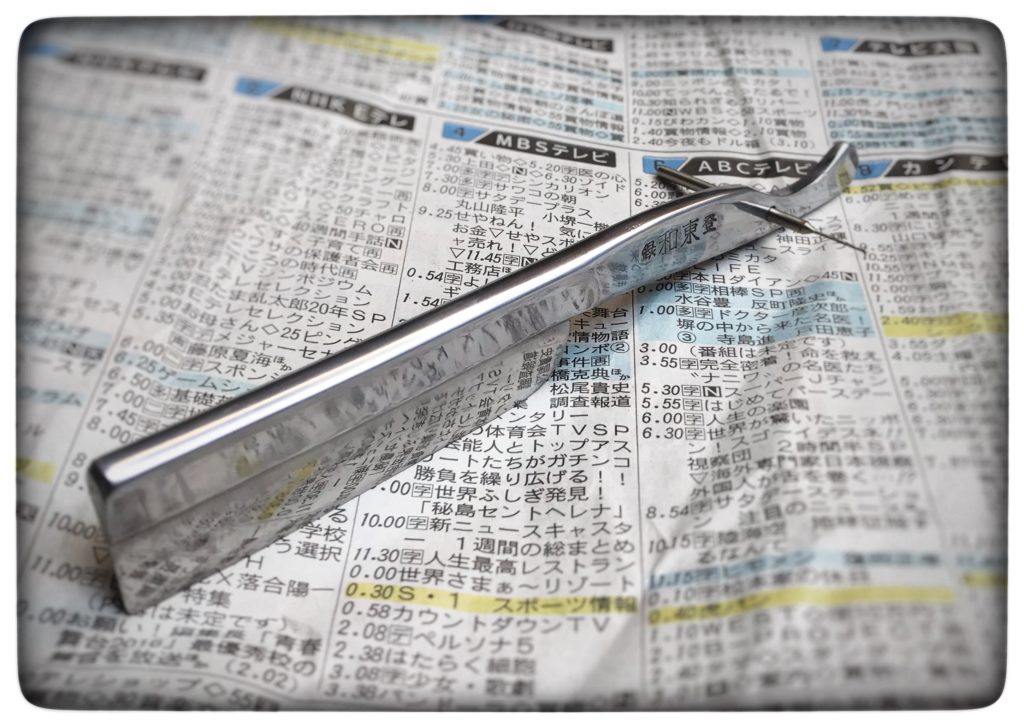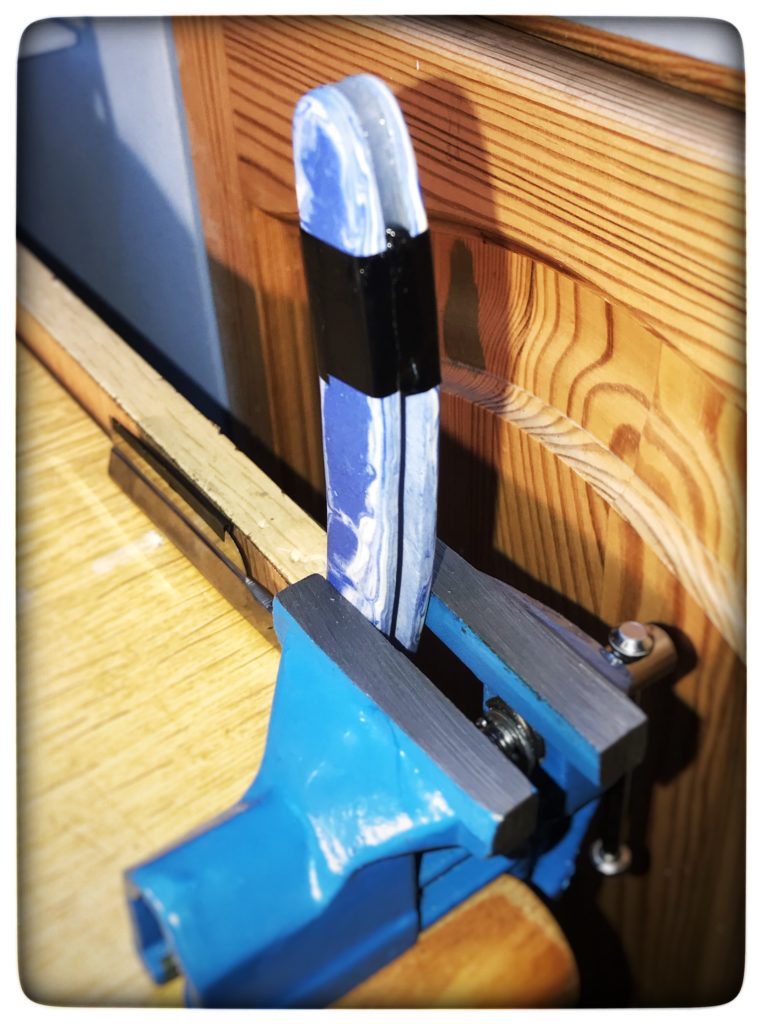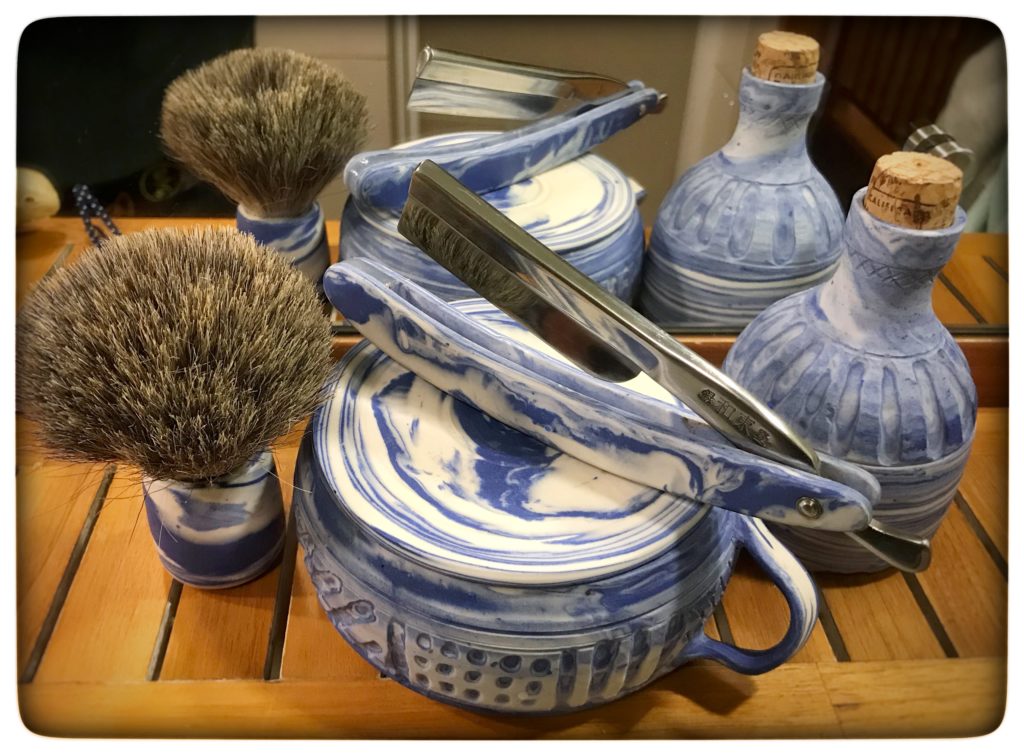In the beginning of December 2018 I published a short story about my attempts to make scales for razor from marbled porcelain. See the article here describing all the challenges and difficulties for making the scales plain and at the exact dimensions regardless the double firing and shrinking. Most likely, it is more fascinating for potters than razor makers. This part is more for the latter group.
Finaly, I have finished with that razor, so I can present complete set (there is another member – marbled mug but I do not use it for shaving).
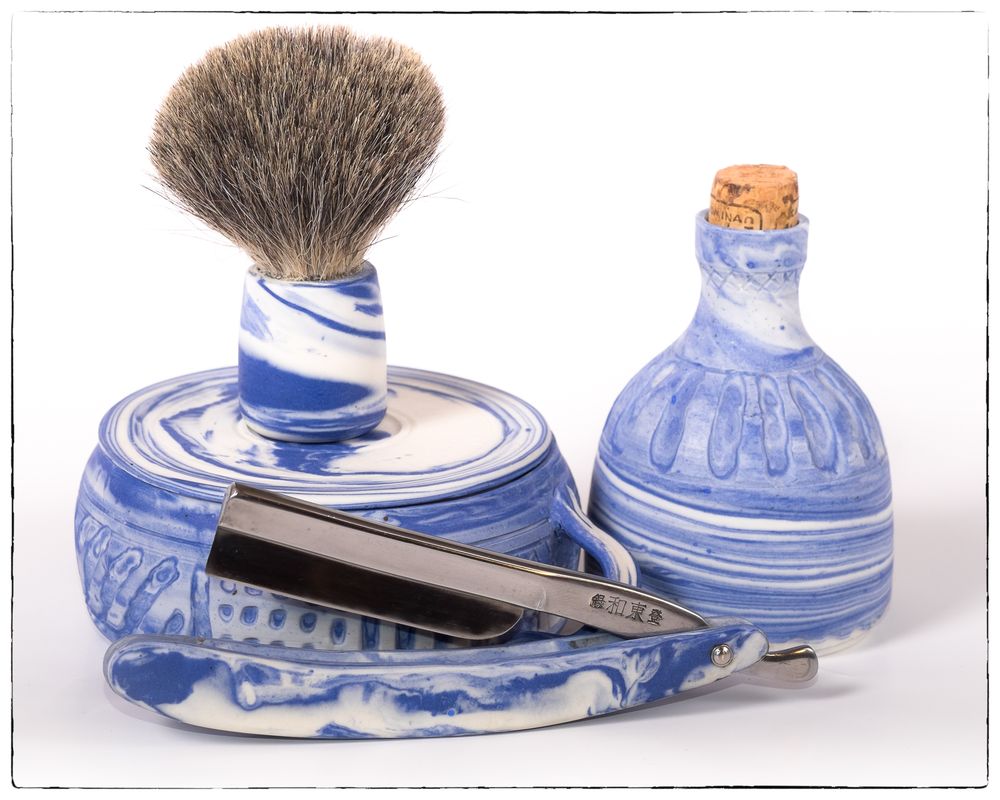
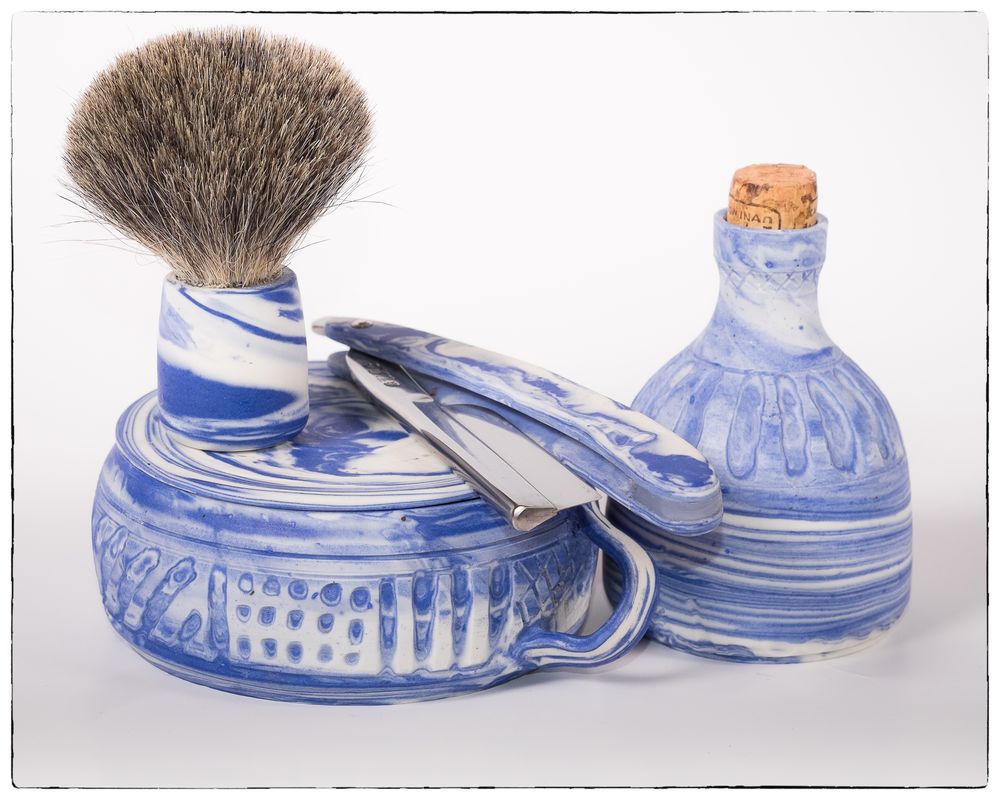
I admit, there are thousands of nicer razors and more practical, and less expensive (if someone would try to estimate costs for commercial quotations). My motivation was different. First, I wanted to have nice private set for shaving. This is obvious. But the leading motif is about the challenge and experimentation. I consider traditional shaving as extravagance itself. So why not to get into development of something which is made against rules and gives fun.
So, what is so special about this razor? What is against the rules? “Normal” typical razor scales are flexible, they bend and lean while moving the blade in the pivot. It is a simple mechanism to centre the blade while putting it safely in between scales and also to block it “half-open” to not flap accidentally and unintentionally. Here, the porcelain scales are stiff and not flexible at all. This fact pushed me to the idea to transfer flexibility into other elements of the razor. I decided to make the wedge elastic and mount the pivot pin with spring washer (self made). That also resulted in lack of bottom pin, which would make the whole construction again not flexible at all. The result is very satisfying. The blade centres nicely, the wedge keeps both scales integrated, the balance between smooth movement of blade and resistance is “regular”, the blade can stop steady in half-way, the blade can be opened at any angle.
Another positive surprise is that, regardless the depth of the scales, it is not heavy. The sales do not overweight the blade when manoeuvring in open.
I must admit that in the beginning I was afraid of the risk of breaking the scales. So, I kept the depth dimension of the sales quite big. It is that smooth-thin as in many plastic scales. I watched carefully when hammering the pin (it is not any prefabricated pin but a regular steel rod with washers). But then later overlooked my son who wanted to follow me in pinning and was hammering the scales, not the pin. It survived with no damages. Now I can regret that I did not flatten the scales more. Maybe, some time later….in future.
